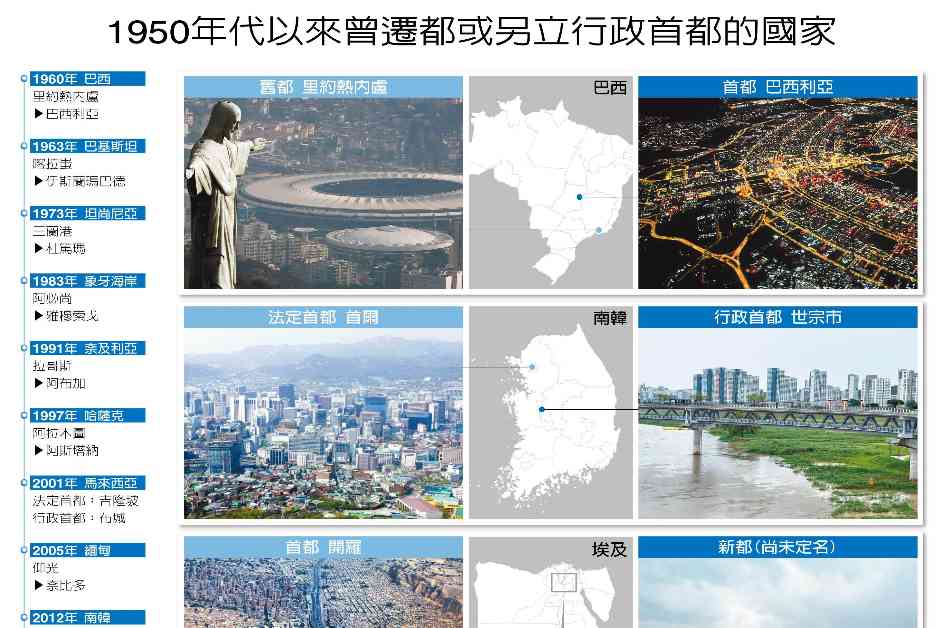Benefits and Failures of Relocation: Lessons Learned
The concept of relocating capitals or establishing new administrative centers has been a topic of interest for many countries around the world. This strategic decision is often made to achieve a balance in various aspects such as economic development, strategic security, and political stability. While some countries have successfully executed these relocation plans, others have faced challenges and setbacks along the way. Let’s delve into the benefits and failures of relocation, examining lessons learned from countries like Brazil, Indonesia, South Korea, Malaysia, and others.
### Brazil: A Model of Successful Capital Relocation
In the 1960s, Brazil made a significant move by relocating its capital from the bustling port city of Rio de Janeiro to the inland city of Brasília. This decision was hailed as one of the most successful cases of capital relocation, with Brasília eventually becoming the first modern city to be designated as a UNESCO World Heritage Site in 1987. The construction of Brasília began in 1956 as part of President Kubitschek’s national modernization plan. The rapid population growth in Rio de Janeiro made it challenging for the capital to fulfill its political functions effectively, leading to the selection of Brasília on a plateau as the new administrative center.
Initially designed to primarily serve administrative functions like Washington, D.C., Brasília evolved into a key node driving development in the central-western region of Brazil. With a current population of nearly 4 million, Brasília boasts a high per capita GDP among major Latin American cities, showcasing the successful transformation that inspired many other countries to follow suit.
### South Korea: Transitioning to a “Dual Capital” Model
South Korea also grappled with the issue of excessive centralization in its capital city, Seoul. During President Roh Moo-hyun’s tenure, plans were made to construct a new city to replace Seoul as the capital. However, subsequent President Lee Myung-bak abandoned the relocation project, opting for a “dual capital” model instead. In 2012, the administrative new town of Sejong City, located approximately 120 kilometers south of Seoul, was inaugurated with the aim of alleviating the burden on the capital region and promoting regional balanced development. While several government ministries relocated to Sejong City between 2012 and 2014, key institutions like the presidential palace, parliament, defense ministry, and foreign ministry remained in Seoul.
Despite efforts to decentralize the capital functions, the anticipated benefits of dispersing government operations were not fully realized. Experts like Marcus Lee, a senior urban economist at the World Bank in Indonesia, highlighted the limited impact of the move, noting that while many government offices were established in Sejong City, the actual number of people relocating there was minimal. Michele Acuto, a professor of urban politics at the University of Melbourne, emphasized the importance of human capital in city success, suggesting that without a significant population shift, even well-planned urban layouts struggle to achieve their intended goals.
### Thailand: Considering Capital Relocation Due to Climate Threats
Apart from addressing the challenges of overcrowded cities, the threat of climate change has emerged as a driving force behind capital relocations. As urbanization accelerates globally, many regions, particularly tropical areas, face increasing vulnerability to climate-related risks. Thailand, for instance, expressed concerns in May of this year about the possibility of relocating its capital from Bangkok due to rising sea levels. The city’s low-lying geography makes it susceptible to inundation in the face of current warming trends, prompting discussions about the necessity of relocating the capital to ensure long-term resilience.
In conclusion, the experiences of countries like Brazil, South Korea, and Thailand underscore the complex considerations involved in capital relocations. While successful cases like Brasília demonstrate the transformative potential of such moves in promoting regional development, challenges like human capital retention and climate change threats highlight the need for comprehensive planning and stakeholder engagement in relocation projects. As countries navigate the dynamics of urban growth and sustainability, the lessons learned from both successful and failed relocation endeavors can serve as valuable guides for future decision-making in capital development strategies.












